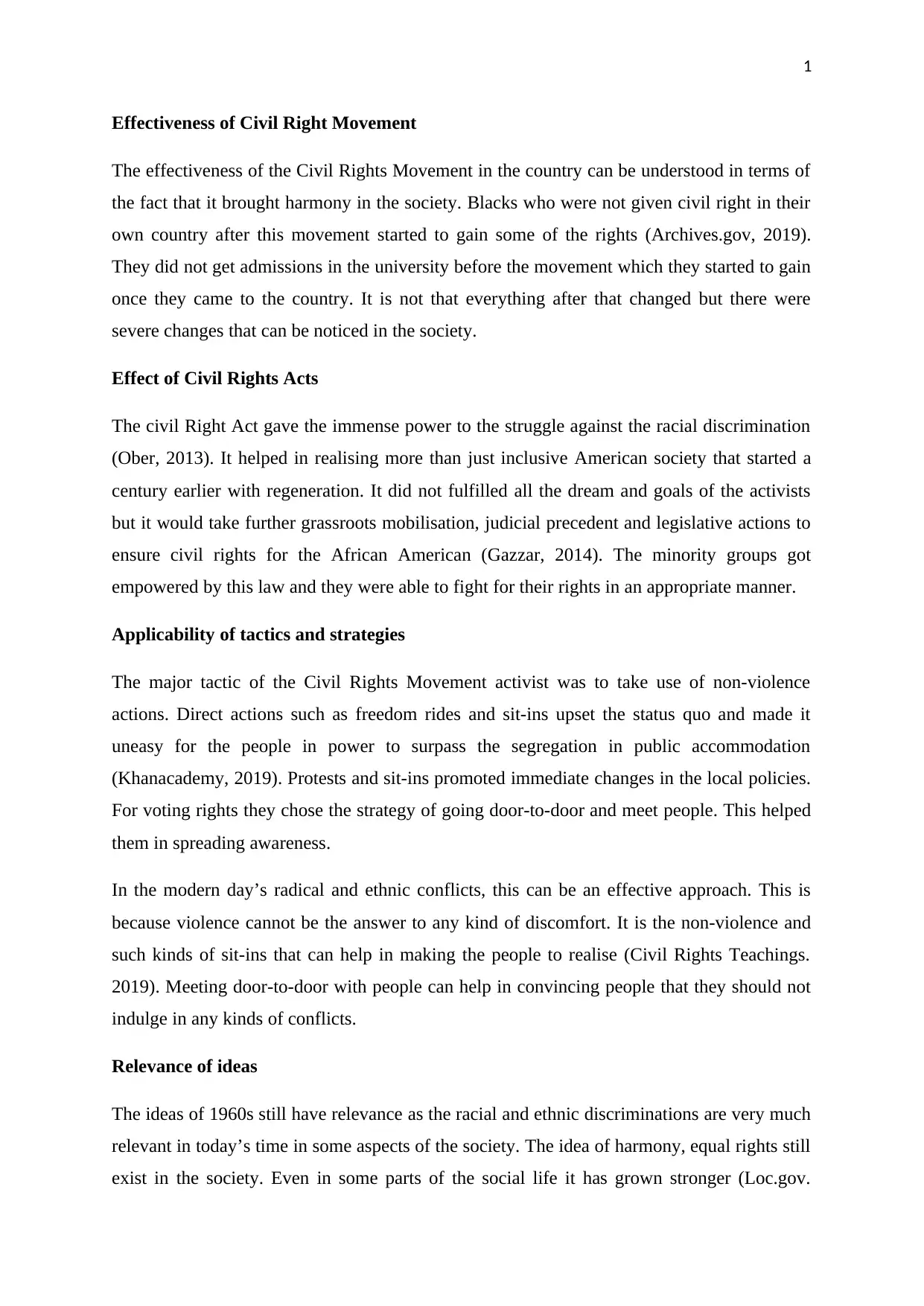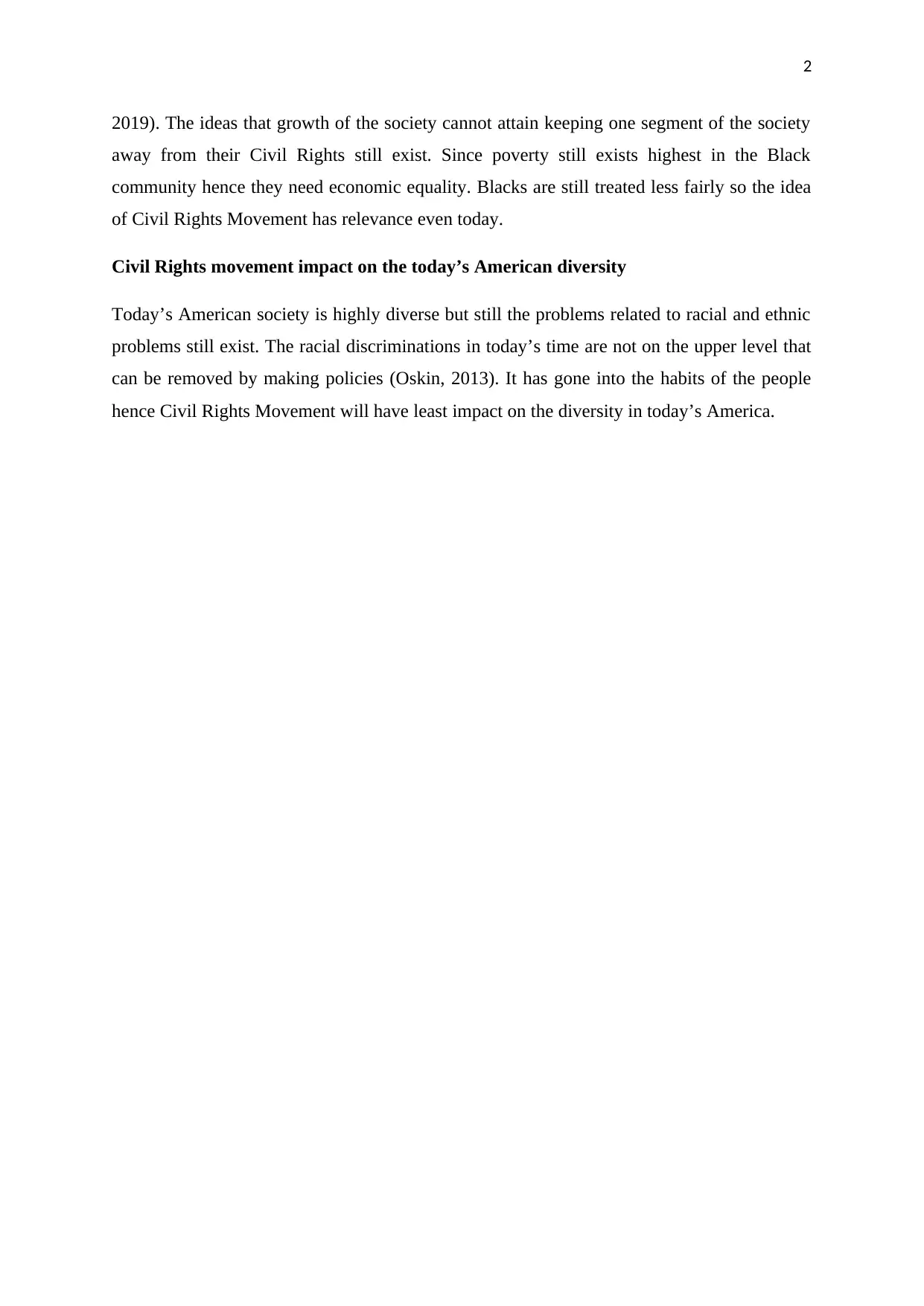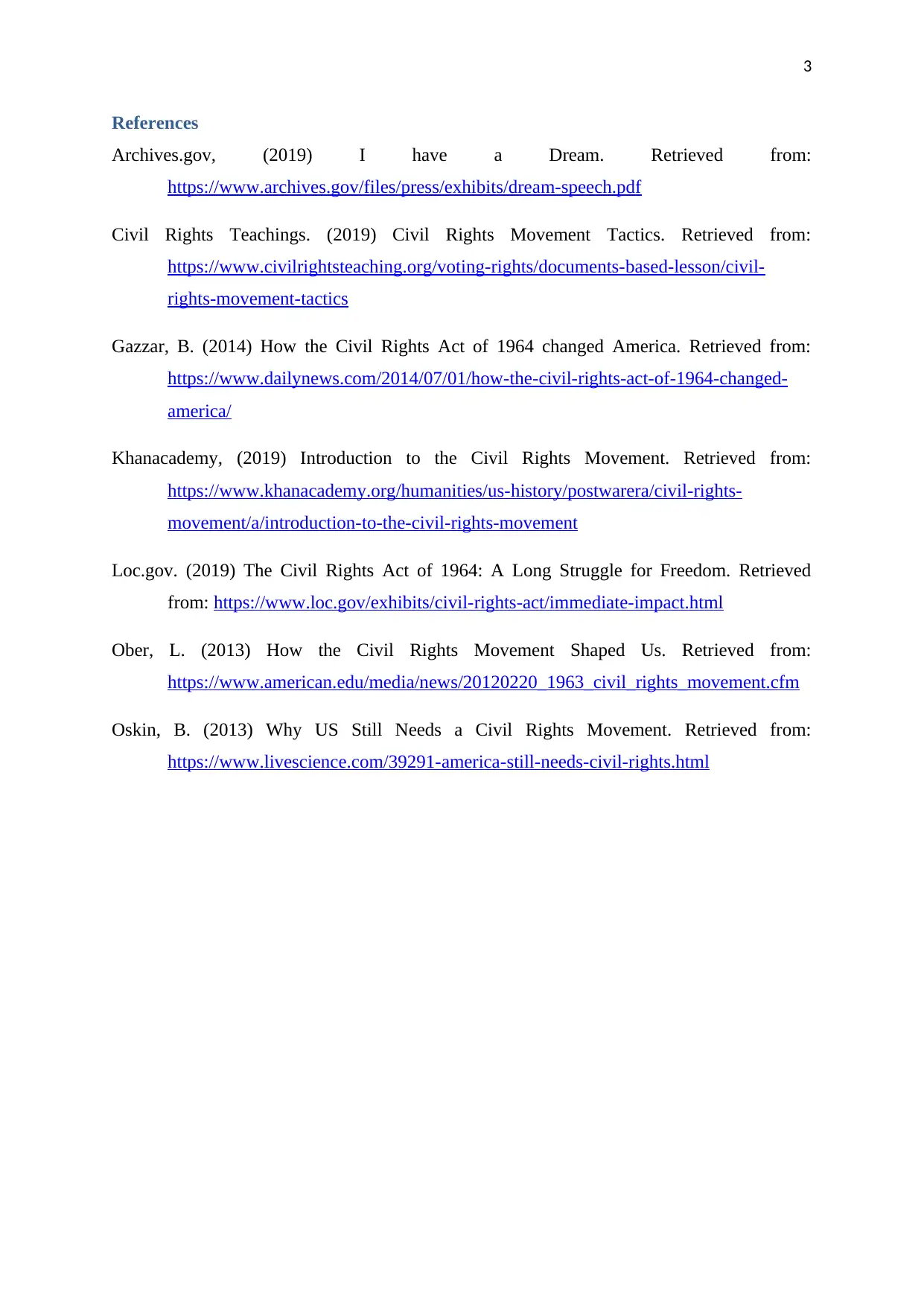Analyzing the Effectiveness of the Civil Rights Movement in US History
VerifiedAdded on 2022/12/12
|4
|724
|393
Case Study
AI Summary
This case study examines the effectiveness of the Civil Rights Movement in the United States, highlighting its role in fostering social harmony and empowering minority groups through legislation like the Civil Rights Act. It assesses the applicability of the movement's non-violent tactics, such as sit-ins and door-to-door campaigns, to modern racial and ethnic conflicts. The study also explores the continued relevance of the movement's ideas, particularly concerning equality and economic justice, while acknowledging the persistent challenges of racial discrimination in contemporary American society. It concludes by analyzing the complex impact of the Civil Rights Movement on today's American diversity, noting that while progress has been made, deeply ingrained racial biases remain a significant issue.
1 out of 4











![[object Object]](/_next/static/media/star-bottom.7253800d.svg)